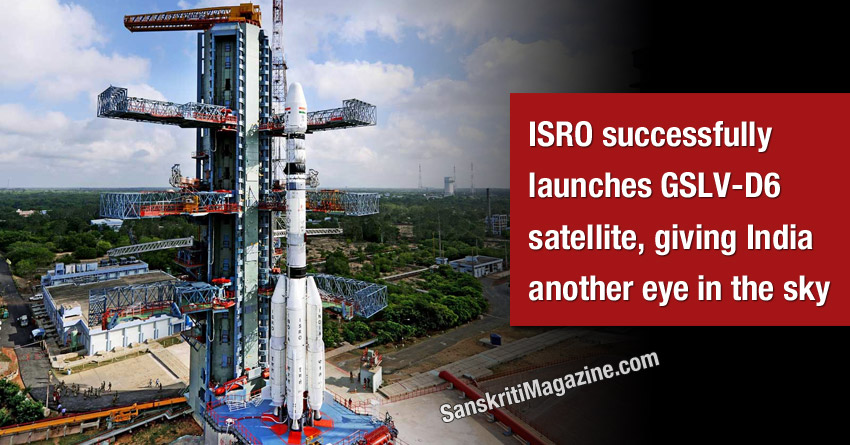Staging yet another spectacular launch of three-stage heavy weight rocket GSLV D-6 with indigenous cryogenic upper stage, Indian Space Research Organisation (ISRO) on Thursday successfully put in orbit GSAT-6 communication satellite.
 The GSLV D-6 is the second successful consecutive launch of the GSLV series with indigenous cryogenic upper stage. ISRO had on January 5, 2014 launch GSLV D-5, after a similar attempt failed in 2010.
The GSLV D-6 is the second successful consecutive launch of the GSLV series with indigenous cryogenic upper stage. ISRO had on January 5, 2014 launch GSLV D-5, after a similar attempt failed in 2010.
About 17 minute after the 49.1 metre high spacecraft lifted off raised from the second launch pad of Satish Dhawan Space Centre with a lift-off weight of 416 tonne at 4.52 pm, the rocket placed GSAT-6 in the intended orbit.
S-band communication services
The satellite would be eventually fine tuned into the final geostationary orbit at 83 degree East longitude. GSAT-6 will provide S-band communication services in the country.
“The performance of GSLV D-6 has been normal and the intricacies of the rocket have been understood,” ISRO chairman A.S. Kiran Kumar said soon after the launch, from the Mission Control Room.
The Thursday’s launch could mean that the national space agency was increasingly confident of launching the heavy weight rocket with indigenous cryogenic upper stage, which can lift payloads weighing about 2.2 tonne.
Mission Director Umamaheswaran said that the launch was a “Onam” gift of ISRO to the country.
Largest antenna ISRO has ever made
The 2,117 kg-weighing GSAT-6 communication satellite is aimed at primarily benefiting the country’s strategic users and other specific authorised users. The cuboid-shaped satellite with a mission life of nine years also includes a first-of-its-kind S-Band unfurlable antenna with a diameter of six metre. This is the largest antenna ISRO has ever made for a satellite.
Though the Thursday’s launch is the nine time ISRO was using GSLV rocket, this is the third time the rocket was being launched with indigenous cryogenic upper stage. “GSLV-D6 flight is significant since it intends to continue the testing of CUS,” according to ISRO.
The cryogenic stage was “technically a very complex system” compared to solid or earth-storable liquid propellant stages due to its use of propellants at extremely low temperatures and the associated thermal and structural challenges, ISRO stated.
A cryogenic rocket stage “is more efficient and provides more thrust for every kilogram of propellant it burns” compared to solid and earth-storable liquid propellant rocket stages, it added. The cryogenic stages fires for a nominal duration of 720 seconds during the launch.











